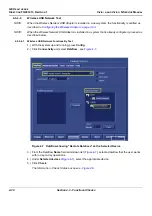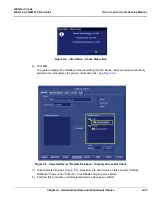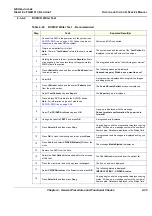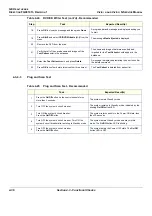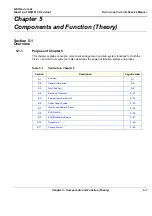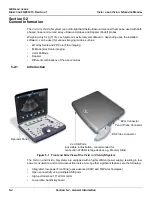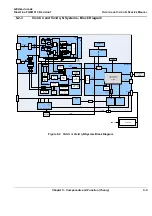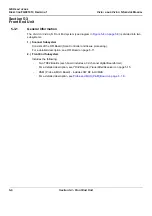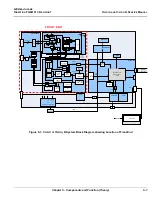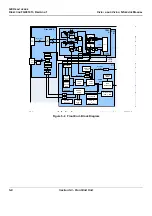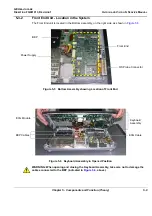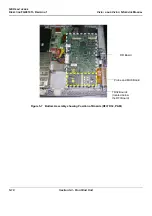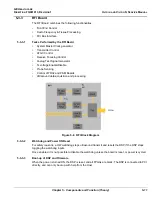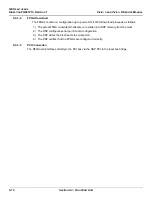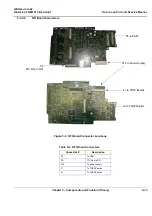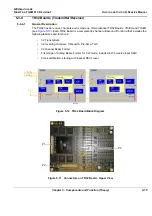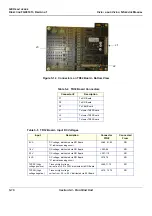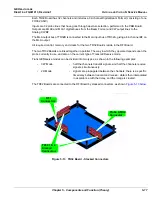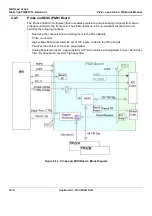
GE H
EALTHCARE
D
IRECTION
FQ091013, R
EVISION
1
V
IVID
I
N
AND
V
IVID
Q
N S
ERVICE
M
ANUAL
5-4
Section 5-2 - General Information
5-2-2
Signal Flow
The two TR32 Boards in the Front-End Processor generate the strong bursts transmitted by the probes
as ultrasound into the body. The Transmit bursts are routed from the TR32 Boards via the Probe and
MUX Board (P&M), to the ultrasound probe located on the board.
Weak ultrasound echoes from blood cells and body structure are received by the probes and routed via
the Probe & MUX Board back to the TR32 Boards. The TR32 Boards amplify these signals, convert
them to a digital signal and do the beam forming.
The vector data streams (one per each MLA) generated by the Beam Former are routed to the
RFI Board for further processing by the Demodulator FPGA and DSP and then the signals are
transferred via the PCI bus to the Back-End Processor where they are converted to video. The video
signals are routed to the internal LCD monitor and to the VGA connector located on the back panel for
connection of external monitor or VCR (via special adaptor).
5-2-2-1
System Configuration and Software
System configuration is stored on a hard disk drive inside the Back-End Processor.
At power up, all necessary software is loaded from the hard disk.
5-2-2-2
Operator Panel
The user initiates system operations via the Operator Panel that has ultrasound-specific buttons,
mode-dependent softkey buttons and an alphanumeric keyboard.
5-2-2-3
Electronics
Vivid
i
n and Vivid q N internal electronics are divided into three main components:
•
Front End (FE) Processor
•
Back End Processor (BEP)
•
DC/DC Power Supply (DC/DC PS)
For both Vivid
i
n and Vivid q N systems, internal electronics comprise a single card cage that contains
both the FEP and the BEP. The interconnecting signals between the two sections are routed internally
via a flex board. The power lines from the DC/DC PS are routed internally via two cables, to the BEP
and FEP. The video signals are routed from the BEP to the LCD via a flex cable. The interconnection
to the operator keyboard is via a dedicated cable. An additional flex connects the ECG module to one
of the USB ports located on the keyboard.
The main functional blocks in the Vivid
i
n and Vivid q N systems are listed below, and described in detail
in this chapter, as follows:
•
Front End (FE) Processor - see
Section 5-3 "Front End Unit" on page 5-6
•
Back End Processor (BEP) - see
Section 5-4 "Back End Processor" on page 5-21
•
Internal and external cable interconnections - see
Section 5-5 "External Input/Output (I/O)" on page
•
Monitor & Keyboard - see
Section 5-7 "Monitor and Operator Panel" on page 5-34
•
Power Supply System - see
Section 5-6 "Power Supply System" on page 5-30
•
Peripherals - see
Section 5-10 "Peripherals" on page 5-46
For a detailed block diagram of the Vivid
i
n/ Vivid q N system, refer to
Figure 5-2 "Vivid i n/ Vivid q N
System Block Diagram" on page 5-5
.
Summary of Contents for Vivid in
Page 2: ......
Page 30: ...GE HEALTHCARE DIRECTION FQ091013 REVISION 1 VIVID I N AND VIVID Q N SERVICE MANUAL xxviii...
Page 739: ......

